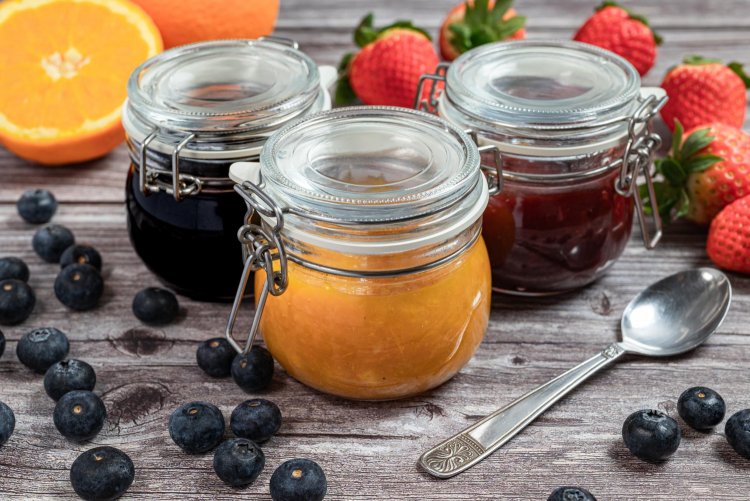The Art of Preserves: A Journey into Jams, Jellies, and Beyond
Preserves, revered for their sweet, fruity flavors and cultural significance, represent a culinary tradition that spans centuries and continents. In this comprehensive exploration, we embark on a flavorful journey into the world of preserves, uncovering their rich history, diverse varieties, nutritional benefits, intricate making process, versatile culinary uses, and modern trends.

Preserves: A Culinary Journey Through Time
Preserves, ranging from jams to jellies and beyond, have captivated palates and held cultural significance throughout history. Beyond being simple spreads, they embody craftsmanship and innovation, offering a taste of tradition with every spoonful.
What are Preserves?
At their core, preserves are fruit-based spreads crafted to preserve the flavors and textures of fresh fruits. Jams, characterized by their crushed fruit consistency, vary from smooth jellies made from fruit juice. Marmalades integrate citrus peels, while conserves pack whole or large pieces of fruit, each type contributing its unique texture and flavor.
History and Evolution
Preservation techniques date back to ancient times when civilizations like the Egyptians and Romans utilized honey to conserve fruits. The introduction of cane sugar in medieval Europe elevated preserves to a luxury enjoyed by nobility. This era saw the development of various methods to enhance preservation, culminating in the Industrial Revolution's mechanized canning processes, making preserves accessible worldwide.
Ingredients and Techniques
The art of making preserves hinges on meticulous preparation and cooking processes. Fresh, ripe fruits form the foundation, carefully washed, peeled, and chopped to enhance flavor and texture. Sugar, often combined with pectin, acts as both a preservative and a texture enhancer, crucial for achieving the desired gel consistency. The cooking process involves simmering fruits with sweeteners until they reach the gel point, a critical stage signaling readiness for jarring and sealing to preserve freshness.
Varieties and Flavors
Preserves offer a kaleidoscope of flavors, influenced by regional fruits and culinary traditions worldwide. From classic strawberry jams and zesty orange marmalades to exotic fig preserves and robust berry conserves, each variety celebrates the bounty of nature and the artistry of preservation. Artisanal creations further enrich the preserve landscape with seasonal fruits and innovative flavor pairings, catering to diverse palates and culinary preferences.
Nutritional Benefits
Beyond their indulgent sweetness, preserves offer nutritional benefits derived from fresh fruits. Rich in vitamins, particularly vitamin C from citrus fruits, preserves provide essential antioxidants that support immune health. Dietary fiber, found in fruit skins and pulp, promotes digestive health and enhances satiety, making preserves a flavorful addition to balanced diets when enjoyed in moderation.
Culinary Uses
The versatility of preserves extends beyond breakfast spreads, elevating both sweet and savory dishes. Traditional uses include pairing with freshly baked breads, scones, or pancakes for a delightful morning meal. In desserts, preserves add depth and fruitiness to pastries, cakes, and cookies, enhancing their sweetness and complexity. Savory applications feature preserves as glazes for meats, sauces for poultry, or accompaniments to cheeses, offering a burst of flavor in every bite and inspiring culinary creativity.
Cultural Significance
Preserves hold cultural significance in various traditions and celebrations worldwide. From English tea traditions to Spanish cuisine's use of quince jelly, preserves symbolize hospitality, prosperity, and the art of preserving flavors for future enjoyment. Homemade preserves, often shared as thoughtful gifts, embody craftsmanship and care, fostering connections and preserving culinary heritage across generations.
Modern Trends and Innovations
Contemporary trends in preserves reflect evolving consumer preferences towards healthier, artisanal, and innovative options. Reduced-sugar and no-added-sugar preserves cater to health-conscious individuals, offering guilt-free enjoyment without compromising flavor. Artisanal producers embrace organic fruits and sustainable practices, crafting preserves with unique flavor profiles such as spicy pepper jellies or floral-infused jams, showcasing creativity and commitment to quality.
Preserves continue to captivate taste buds and inspire culinary creativity worldwide. Their journey from ancient preservation methods to modern gourmet delights underscores their enduring appeal and cultural significance. Whether enjoyed on a leisurely morning or incorporated into gourmet dishes, preserves celebrate the art of preservation while enriching culinary experiences and preserving traditions for generations to come.
Disclaimer: The information provided in this article is for educational purposes only and should not be considered medical advice. If you have any health concerns or are experiencing symptoms, it is important to consult with a healthcare professional, such as a doctor or clinic, for proper diagnosis and treatment. Always seek the advice of your doctor or other qualified health provider with any questions you may have regarding a medical condition. Do not disregard professional medical advice or delay in seeking it because of something you have read in this article.
#Preserves #Jams #Marmalades #CulinaryHistory #FoodCulture
What's Your Reaction?





















